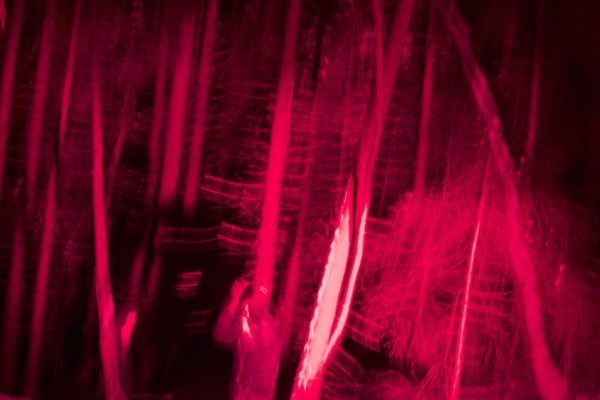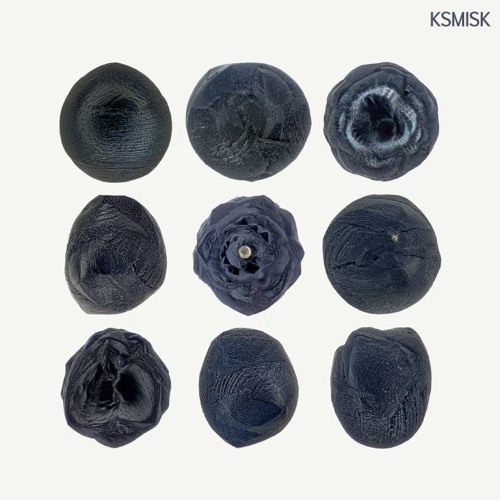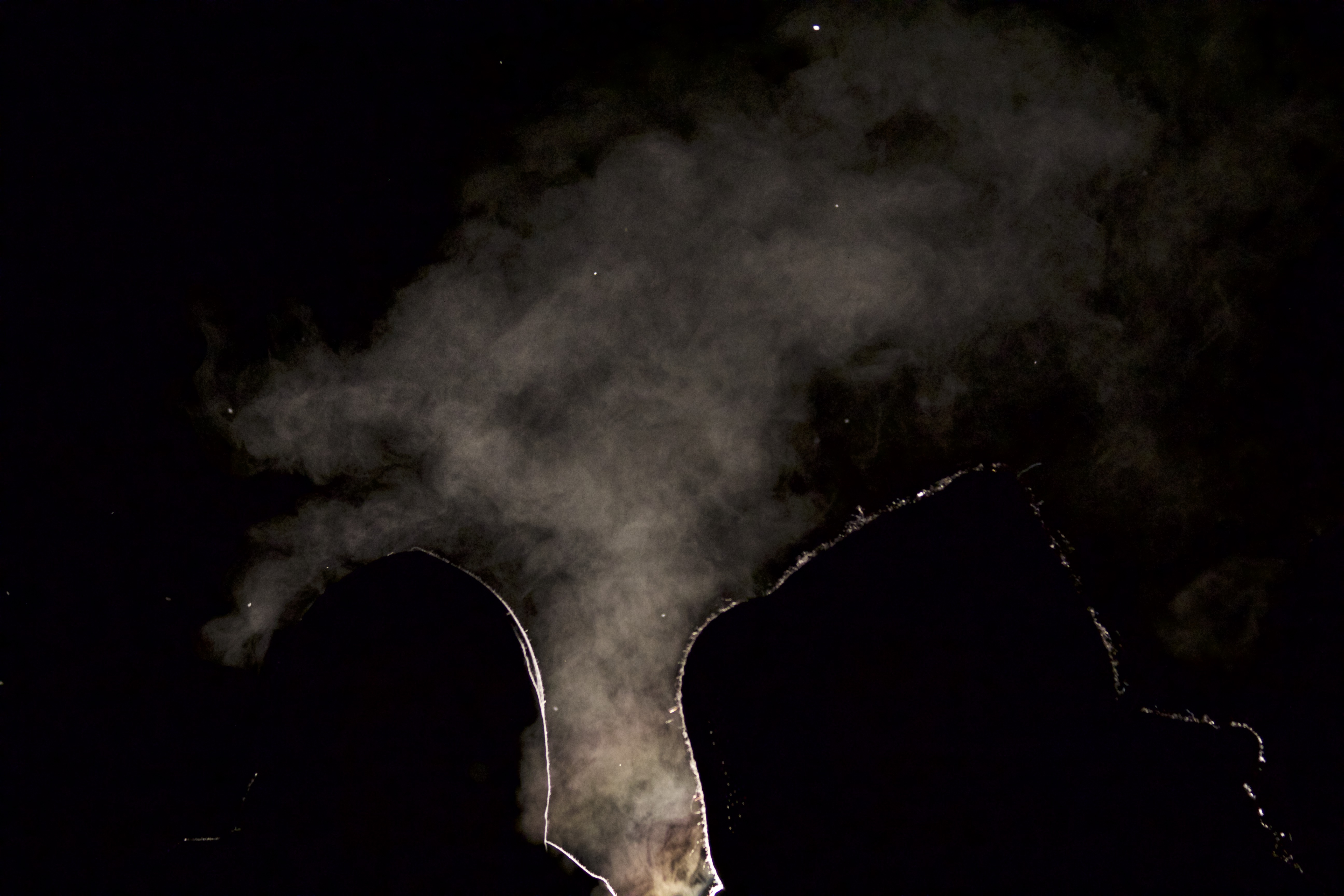While living in Amsterdam Trulz Kvam and Robin Crafoord started the working on their debut album Mechanized World; an album that launched a career as Trulz & Robin which spans a lifetime today. They were young, eager and enthusiastic and when they weren’t working on music they were savouring it at one of their favourite haunts in that city, Westergas. A converted gas tank that became an underground Techno club, Westergas was the De School or Shelter of its day with every serious Techno DJ passing through its booth. One particularly memory of the place remains particularly vivid to the duo.
It was a Techno night with Jeff Mills Luke Slater and Surgeon on the bill. When the batton was passed to Surgeon a particular mood filled the tank at Westergas. It started with loud “drone” remembers Truls, who suddebly stands up out of his chair as if the immensity of the moment is just to much to contain. “The walls were vibrating and then suddenly…” Truls trails off into a guttural explosive noise. “He blew Luke Slater and Jeff Mills away!”
They went home the next morning and immediately started work on what would become “Hypnojam”, the first single from their debut album, released in 2001 to great critical acclaim. The experience at Westergas left at an indelible mark on the start of their career as Trulz & Robin, but it has remained committed to their shared memory as they worked through three albums and an extensive collection of EPs over the last twenty years. In 2017, while working on the debut album, Mikrometeorittene under their newly formed KSMISK alias, they would invoke Westergas again as the title of the penultimate track on the album; one of two tracks that don’t perpetuate the geological theme of the album.
“Westergas” is a fast-paced Techno tremor, rumbling in the subterranean belly of clubland, with staccato synths bouncing out of rabbit holes from distant dimensions. The track rips through the centre of a psychedelic maelstrøm of sounds down to some incandescent wonderland. It’s a moment of incredible release as elements swirl around a calm drone, sucking the entire track down a lucid black hole before erupting again into a 4-4 kick and an explosive melee of synthesisers and noise.

Their experience/s in Westergas in some way provided the premise for the way this record would sound, neatly contained within that track. “Yes, that and Blitz”, says Robin, pointing to another track title on the album. The ultimate objective of Truls and Robin’s KSMISK project is a very specific club environment with Robin picturing “a big warehouse setting” or “a big dark hall” when he invokes the sound of KSMISK. “The KSMISK sound”, says Truls, “we always knew what we wanted that to be” and with their debut album Robin believes they’ve “nailed it”. Truls gestures at the sound and the feeling of KSMISK where words fail him. “You’re almost scared”, he says using the Surgeon set at westergas by way of analogy again, “because things are opening up.”
For the last year and half their focus has been primarily on the KSMISK project with two EPs, a single on a PLOINK compilation and now the album, consolidating the sound of the project. There’s a sense of trepidation to the KSMISK sound, which Truls and Robin have channeled through five club tracks and four ambient album vignettes on Mikromitteorittene.
I meet Truls and Robin in their studio along the Akerselva, Oslo where most of Mikrometeorittene was finalised before it was sent to Thomas Urv at PLOINK. Robin puts on a brand new pressing of the record while we talk. “It’s probably the best mastering we’ve ever had on a record”, he claims. At some point through my questions I lose focus and drift off, compelled towards the sounds of “Marinate”, the choppy vocals of Maria Isabel calling to mind an amalgamation of 90’s rave music that’s very specific but also incredible intangible in that moment. A collective nostalgia seeps in through the contemporary Techno aesthetic, but Truls insist it was a completely “unconscious” reference to a time past.
Robin met Truls after moving to Oslo from Gothenburg in the mid nineties while the latter was working at Music Maestro (a long-gone record store with its own stories to tell) and found a kindred spirit in Truls. They bonded over a shared love of all things House and Techno, and started DJing together, hosting parties like those at the aforementioned Blitz on the side. They were one of the few DJs playing Techno in a city dominated by House and DJing would eventually lead to producing, something Robin had already started experimenting with back in Sweden. Two weeks from the time Robin landed in Oslo, he moved in with Truls and the pair turned their living room into a studio. Three albums later and a host of EPs as Trulz and Robin, the pair have been exploring the vast boundaries of electronic music, from the retrofitted Techno of Mechanized World, to the Electro/House-funk of Kaosmatisk and the deep, melodic electronica of Dance Music Therapy.
It has come to a point today where booking Truls and Robin could accommodate any and all of these disparate musical styles and that’s informed a major part of the decision to create the KSMISK alias. “We had a lot of different styles so it was nice to do something that was more pure”, explains Truls. “This project made us realise we can separate it more”, adds Robin “and get it more structured, and that’s been a good process for us.” With their electro-leaning Robomatic project and KSMISK, joining the Trulz & Robin franchise, they divide their efforts across three monikers, cultivating a distinct sound for each.
 Mikrometeorittene’s closest descendant is Mechanized World, but offering a much more contemporary approach to the Techno genre. I wonder if it is down to an evolution in their work, but Truls suggests not. “I feel in a way we go in a circle” and redefining the parameters between the projects has allowed them more freedom to explore these more purest forms of their cavernous electronic music interests. KSMISK is a “different vibe in general” according to Robin who also believes they should’ve separated these different sounds “years ago”.
Mikrometeorittene’s closest descendant is Mechanized World, but offering a much more contemporary approach to the Techno genre. I wonder if it is down to an evolution in their work, but Truls suggests not. “I feel in a way we go in a circle” and redefining the parameters between the projects has allowed them more freedom to explore these more purest forms of their cavernous electronic music interests. KSMISK is a “different vibe in general” according to Robin who also believes they should’ve separated these different sounds “years ago”.
After a short introduction via “Lonsdaleite”, “Silicate” sets the pace of the album in a progressive arrangement over a hefty 9 minutes long. It continually builds tension as static repetitive parts only modulate in textures before subsiding into the deep rolling waves of bass and kick. There’s a distinct progressive form that never quite resolves, leaving the listener on a frayed edge of anxiety as it rolls past every phase of the track with little relief coming from the white noise and feedback as it disperses into the ether. The rhythm is incessant and unrelenting and like a piece of psychedelia or dub it remains a constant in amongst the ephemeral atmosphere that cloud the track.
I’m not surprised to find that all tracks were conceived as a live jam, while listening to “Silicate”. There’s an organic process underpinning the progression of the track, with the slightest of human touches etching out the arrangement in a very controlled and reserved way, and I find it’s very much down to the way Truls and Robin work together. “Even if I’m sitting with something at home I’m always recording”, says Truls. From these live jam sessions at home and the studio “a lot of sketches” appea ed,which they finalised by “colouring the sound” explains Robin. The effects are a record that speaks to the body without overtaxing the cognitive. “I don’t like to be in the head”, explains Truls about their working process. “Once you start thinking about what you are going to do, I feel it never works.”
Truls and Robin came through in the world of analogue equipment and dat recorders, where if something is deleted it stays deleted or when something is recorded it can be recalled and reworked at any time. Their workflow has remained consistent even through the digital era with the live aspects of their work defining the Trulz & Robin sound through the years. They’ve never lost sight of that approach they say, and in KSMISK it’s quite prominent both on the record and on stage.
KSMISK is live project rather than a DJ set, but it’s largely been a solo project with only Robin representing the duo as Truls suffers from severe tinnitus. “They are not with me anymore, these ears” says Truls. A car accident, “a long time ago” was the cause for the affliction, but over the years it’s only aggravated its effects. “Weeks afterwards my head is (still) ringing.” He feels it’s “hard on the psyche” when he’s making music or listening to it, envisioning the party before him, but has it affected the music? “Maybe”, he suggests but “that’s hard for me to know.” What he does know is that he “appreciates it much more… I treasure it when I listen to music now”.
Although he will not be able to make this upcoming Jæger gig for fear of the soundsystem in our basement, he is hopeful that Sommerøya will see him back on stage again. In some devine fate Surgeon will be performing on the same stage and Truls and Robin are eager to share their story of the Westergas experience with him.
Beyond that…. after spending a year and a half on KSMISK they are returning as Trulz and Robin with their fourth studio album and a new bandcamp label. “We have so much more music” says Truls and they are itching to get it out there; “just do it for ourselves.”
*KSMISK perform live this Friday at Frædag x PLOINK.

